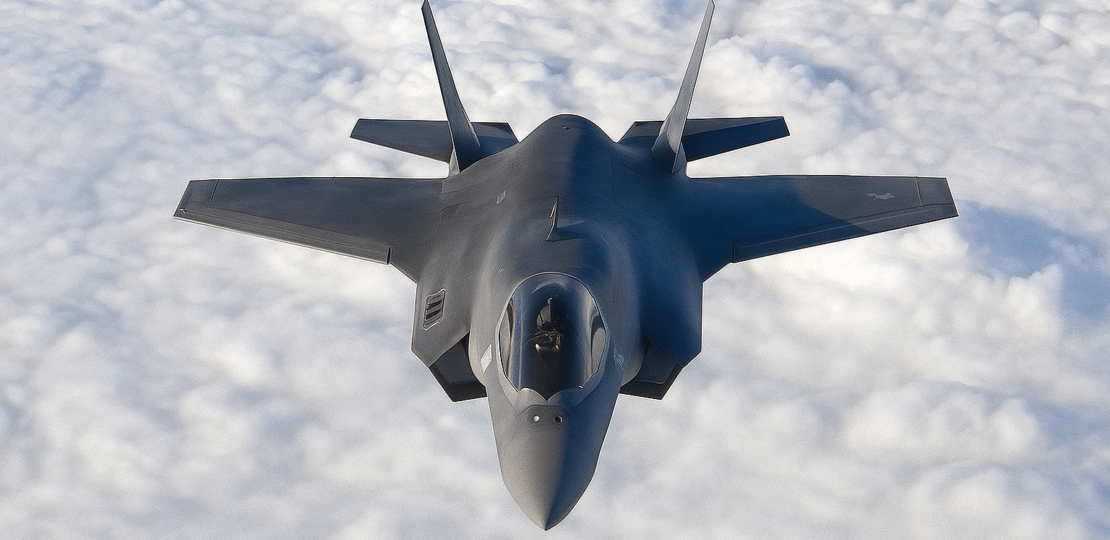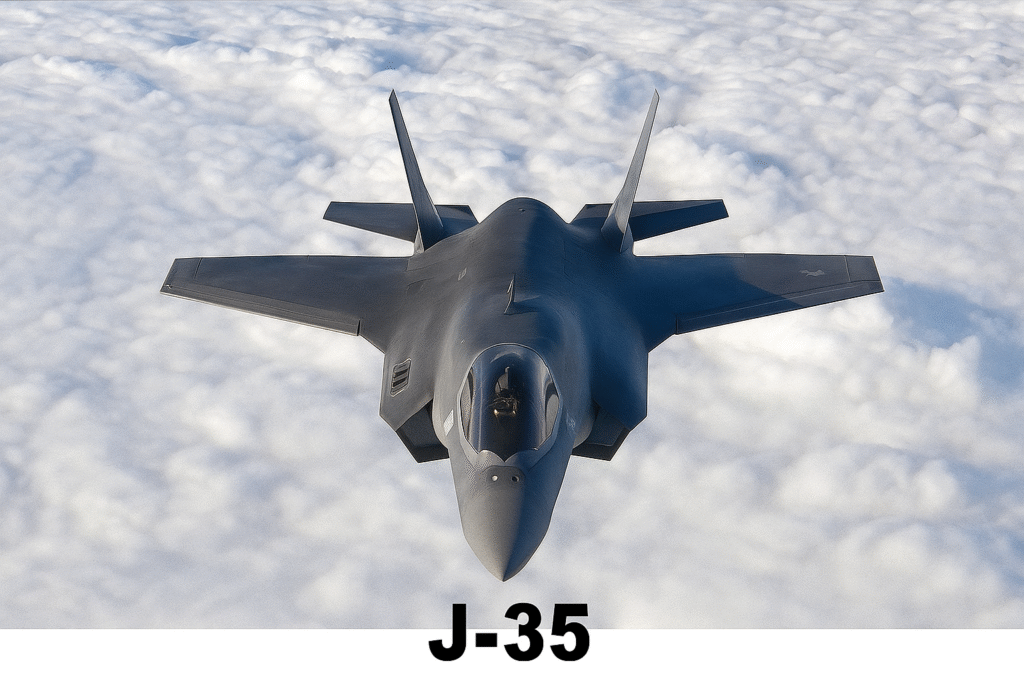Pakistan J-35 Fighter Jets: PAF’s Fifth-Generation Power Leap in 2025
August 7, 2025 | by Bonitas

Introduction
The Pakistan Air Force (PAF) is on the cusp of a transformative advancement with its planned acquisition of Chinese-made J-35 fifth-generation stealth fighter jets, also known as the FC-31 in some contexts. This strategic move is set to enhance Pakistan’s aerial defense capabilities significantly, positioning it to maintain a balance of power in South Asia, particularly in light of India’s growing military strength with assets like the Rafale and the development of its Advanced Medium Combat Aircraft (AMCA). The J-35 represents the cutting edge of modern fighter jet technology, offering advanced stealth features, superior maneuverability, and multirole capabilities essential for contemporary warfare. This article explores the J-35’s capabilities, its role in PAF’s modernization efforts, and the broader strategic implications for the region.
Understanding the J-35 Fighter Jet
The J-35, developed by China’s Shenyang Aircraft Corporation (SAC), is a fifth-generation multirole stealth fighter designed to compete with global counterparts like the U.S. F-35 Lightning II. Initially developed as the FC-31 Gyrfalcon, a privately funded export-oriented prototype, the J-35 has evolved into a sophisticated platform with variants for both the Chinese Navy (J-35) and Air Force (J-35A). The land-based J-35A, likely the variant Pakistan is acquiring, is tailored for air superiority and strike missions.
Technical Specifications
| Specification | Details |
|---|---|
| Length | Approximately 17 meters |
| Wingspan | Approximately 11 meters |
| Maximum Takeoff Weight | Approximately 28 tons |
| Top Speed | Mach 1.8 (2,205 km/h) |
| Range | Over 2,500 km |
| Engines | Two WS-19 turbofan engines |
| Armament | Internal weapons bays for air-to-air and air-to-ground missiles, including PL-17 (400 km range) |
Key Capabilities
- Stealth Technology: The J-35 features a low radar cross-section achieved through careful airframe shaping, radar-absorbent materials, and internal weapons bays, making it difficult for adversaries to detect.
- Supercruise: Powered by two WS-19 engines, the J-35 can sustain supersonic speeds without afterburners, enhancing fuel efficiency and operational range.
- Multirole Versatility: Capable of air superiority, ground attack, and maritime strike missions, the J-35 is equipped with advanced avionics, likely including an Active Electronically Scanned Array (AESA) radar and integrated electronic warfare systems.
- Cost-Effectiveness: With an estimated unit cost of $70 million, the J-35 offers a competitive alternative to Western fifth-generation fighters like the F-35, which costs significantly more.
The J-35’s design draws comparisons to the F-35 due to its stealth features and multirole capabilities, though it is a twin-engine aircraft, unlike the single-engine F-35. Some analysts suggest that its development may have benefited from data related to the F-35, though this remains speculative. The J-35’s internal weapons bays can carry advanced munitions like the PL-17 air-to-air missile, providing long-range engagement capabilities.
Pakistan Air Force’s Modernization Efforts
The PAF has been actively modernizing its fleet to address emerging threats and maintain operational readiness. Recent inductions include:
- J-10C Firebird: A 4.5-generation multirole fighter offering beyond-visual-range combat and precision strike capabilities. The PAF inducted its first batch of J-10C jets in March 2022, enhancing its ability to counter India’s Su-30MKI and Rafale jets.
- JF-17 Thunder: Co-developed with China, the JF-17 is a lightweight, multirole fighter that forms the backbone of the PAF. Continuous upgrades, including improved avionics and weaponry, have kept it relevant.
- Drones and Support Aircraft: The PAF has also integrated advanced drones like the Turkish TB-2 and acquired ex-Belgian C-130H Hercules airlifters to bolster its auxiliary capabilities.
The J-35 will complement these platforms by providing a stealthy, high-end fighter capable of penetrating contested airspace and engaging targets with minimal detection risk. Reports indicate that PAF pilots are already undergoing training in China, suggesting that the acquisition process is well underway, with deliveries expected to begin in 2025, potentially as early as August.
Strategic Implications for South Asia
The acquisition of J-35 fighter jets by Pakistan is likely to have significant strategic implications for South Asia:
- Balance of Power: The J-35 will help Pakistan maintain a qualitative edge against India’s growing air force, which includes 36 Rafale jets and plans for the AMCA, a fifth-generation fighter under development. The J-35’s stealth and long-range capabilities could challenge India’s air superiority in potential conflicts.
- Deterrence: By integrating advanced technology, the PAF enhances its deterrence posture, making it more challenging for adversaries to plan offensive operations.
- Regional Arms Race: The introduction of fifth-generation fighters may prompt India to accelerate its own procurement and development programs, potentially leading to an intensified arms race in the region.
- Strengthened Defense Ties: The acquisition reinforces the strategic partnership between Pakistan and China, building on decades of military cooperation, including the co-development of the JF-17.
However, there is some uncertainty surrounding the acquisition. In June 2025, Pakistan’s Defense Minister Khawaja Asif denied reports of imminent J-35 deliveries, stating that such claims were speculative and primarily served Chinese defense sales interests. Despite this, earlier statements from the PAF Chief in January 2024 and subsequent reports suggest that the acquisition is progressing, with an order for 30–40 jets placed in December 2024.
Global Context
Globally, the proliferation of fifth-generation fighter jets is reshaping military balances. The United States operates the F-22 and F-35, Russia has the Su-57, and China fields the J-20 alongside the J-35. Many allied nations are acquiring the F-35, while others seek cost-effective alternatives like the J-35. Pakistan’s decision to procure the J-35 aligns with this trend, ensuring that it remains competitive in an era where air superiority is increasingly determined by advanced technology. The J-35’s export to Pakistan marks the first international sale of this aircraft, highlighting China’s growing influence in the global defense market.
Conclusion
The Pakistan Air Force’s expected acquisition of Chinese J-35 fighter jets represents a major milestone in its modernization efforts. By integrating advanced stealth, supercruise, and multirole capabilities, the PAF aims to enhance its operational effectiveness and maintain a credible deterrent against potential threats. While some uncertainty surrounds the exact timeline and variant—referred to as both J-35 and FC-31 in various reports—the strategic importance of this acquisition is undeniable. As regional security dynamics evolve, the introduction of fifth-generation fighters will play a crucial role in shaping the future of aerial warfare in South Asia, strengthening Pakistan’s position and deepening its defense ties with China.
For more news Visit Blog

